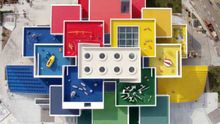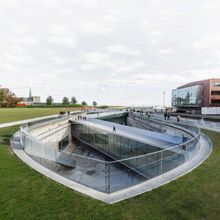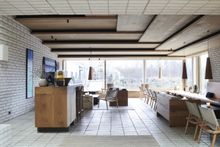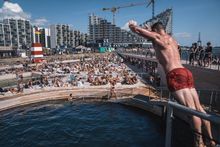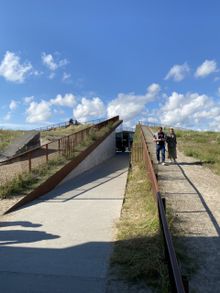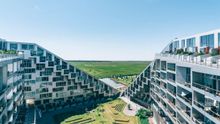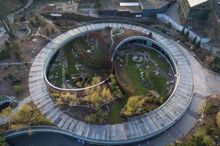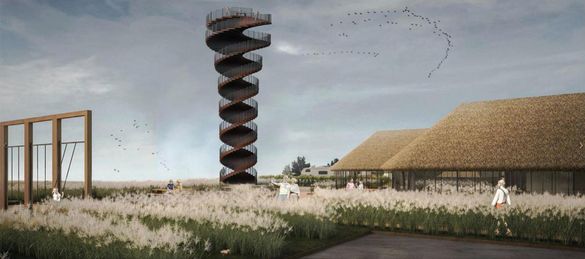 10 May 2021
10 May 2021
The southern part of Denmark will soon get a unique drawpoint to the area created by the famous architectural firm Bjarke Ingels Group – BIG.
Marsktårnet – 'The Marsh Tower' – is placed within the Wadden Sea National Park, and it will open in mid-June 2021.
The sculptural 25-metre-high observation tower takes the shape of a strand of the Wadden Sea's DNA and offers front row seats for the UNESCO-listed national park's sands, sea and offshore islands. Visitors become part of the surrounding nature, while enjoying the view of the sea from the top. They might even spot unique wading birds and seals in the distance.
“The nature in the marsh is completely unique for Denmark, so it has been essential for us to include the nature and the local surroundings in the design of the lookout tower. Our team of landscape architects, engineers, and architects have collaboratively designed a spiral lookout tower, built solely of steps, which allows visitors to view the nature from all angels, every step of the way”, said Jakob Lange, Partner at BIG.
Along the 54km Marsh Trail, located 25 minutes' drive south of the observation tower, visitors can experience more of the marsh landscape and the neighbouring towns.
BIG is also working on a hotel nearby The Marsh Tower called 'A Place to Esbjerg', which will open in late 2021.
Bjarke Ingels Group has created some of the most forward-thinking examples of modern architecture in the world, with several projects in Denmark, including:
- Copenhill, Copenhagen's waste-to-energy plant and world-renowned urban ski mountain. In 2019, the ski slope on the roof opened to the public. The building also comprises the world's largest climbing wall, a hiking route and an apres ski bar.
- LEGO house was designed by BIG and COWI to look like a huge stack of LEGO bricks when seen from above, and with large exhibition spaces inside to encourage play in all forms.
- The Danish Maritime Museum in Helsingør is an inventive underground museum that takes the form of a ship. It is located in a space that was previously the city's dock, bringing new life to a previously disused area.
- noma 2.0 is set in the outskirts of Christiania, Copenhagen, in a cluster of buildings that were designed to reflect Nordic materials and building techniques, and includes permagardens, a test kitchen and a bakery.
- Denmark's harbour baths are one of the most distinctive features of Denmark's city harbours. The development of these iconic cultural floating swimming pools (three in Copenhagen, and one in Aarhus) has been instrumental in turning the harbours into a place to play, enjoy the water, socialise and relax.
- Tirpitz is a spectacular museum hidden under the dunes on the west coast of Jutland in a concrete bunker from World War II. The exhibition focuses on stories of coastal history, and the setting in an ecological park, surrounded by the coastal environment, adds to the powerful storytelling.
- 8Tallet (meaning the 'figure 8') is one of the most talked-about Bjarke Ingels Group buildings in Copenhagen – a residential block on Ørestad, a short cycle or metro ride from the city centre – designed to balance community life in an apartment block, with a kilometre-long footpath that offers ease of access and space to play and connect.
- BIG got together with the world-renowned Danish city planner and architect Jan Gehl to design a whole neighbourhood around the old container port, Aarhus Ø. The result is a highly liveable space with a harbour bath, waterfront promenades and an apartment building, AARhus, at the heart of it.
- Panda House in Copenhagen Zoo has duality as a key feature. The two pandas live in a building shaped like a ying/yang symbol, which provides them with secluded spaces, that allows visitors to still see them.
- END -
Image library of Denmark: https://www.visitdenmark.com/press/photo-videos/media
Contact details: PR & press manager Maria Thuesen Bleeg: marble@visitdenmark.com or PR & press assistant Natascha Lauritzen on natlau@visitdenmark.com
Current coronavirus and travel information to Denmark




